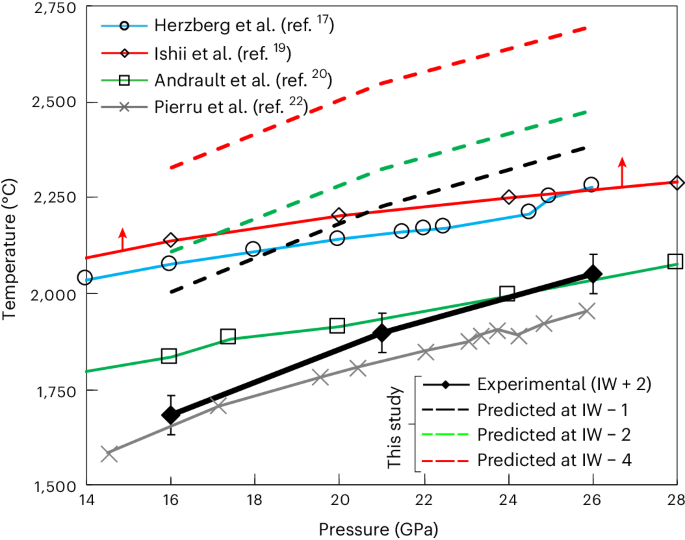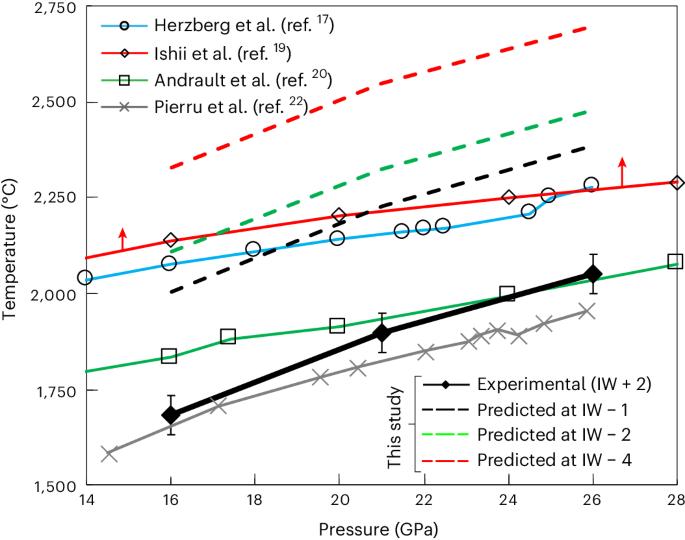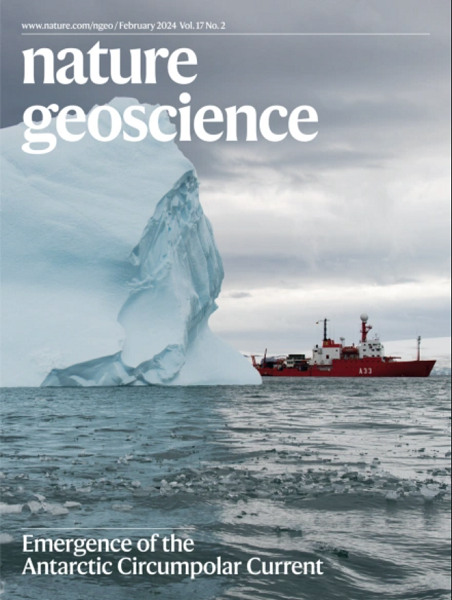陆地岩浆洋底部的融化受氧富集度控制
IF 15.7
1区 地球科学
Q1 GEOSCIENCES, MULTIDISCIPLINARY
引用次数: 0
摘要
吸积撞击产生的热量被认为导致了早期地球硅酸盐地幔的广泛熔化,形成了覆盖地表的深层岩浆海洋。地幔的氧富集度被认为在吸积和地核形成过程中有所增加,原因是撞击物的氧化程度越来越高,而地幔的自氧化程度较低,但这对深层原始地幔物质的固结度的影响还没有得到很好的证实。在这里,我们通过实验测定了地幔辉绿岩在 16-26 GPa 压力和高氧富集度条件下的固相,从而评估了氧富集度对岩浆洋底部条件的影响。我们发现,在这一压力范围内,氧化条件下的实验固相至少比还原条件下的实验固相低 230-450 °C。假设岩浆洋温度不变,这意味着地幔氧富集度每增加一个对数单位,岩浆洋底就会加深约 60 千米。氧富集度对地幔熔化的强烈影响表明,应重新评估早期地球热演化模型和地核形成的地球化学模型。本文章由计算机程序翻译,如有差异,请以英文原文为准。


Melting at the base of a terrestrial magma ocean controlled by oxygen fugacity
Heat delivered from accretionary impacts is thought to have led to extensive melting of early Earth’s silicate mantle, resulting in a deep magma ocean covering the surface. The mantle’s oxygen fugacity is thought to have increased over accretion and core formation due to increasingly oxidated impactors and lower mantle self-oxidation, but the influence of this on the solidus of deep primitive mantle materials has not been well constrained. Here we assess the effect of oxygen fugacity on conditions at the bottom of a magma ocean by experimentally determining the solidus of mantle pyrolite at pressures of 16–26 GPa at high oxygen fugacities. We find that over this pressure range, the solidus in experiments conducted under oxidizing conditions is at least 230–450 °C lower than in experiments conducted under more reducing conditions. Assuming constant magma ocean temperature, this would imply a magma ocean floor that deepens by about 60 km for each log unit increase in mantle oxygen fugacity. The strong influence of oxygen fugacity on mantle melting suggests that models of early Earth thermal evolution and geochemical models of core formation should be reassessed. The melting behaviour of Earth’s primitive mantle was strongly sensitive to changes in oxygen fugacity, according to high-pressure experiments on pyrolite under different redox conditions.
求助全文
通过发布文献求助,成功后即可免费获取论文全文。
去求助
来源期刊

Nature Geoscience
地学-地球科学综合
CiteScore
26.70
自引率
1.60%
发文量
187
审稿时长
3.3 months
期刊介绍:
Nature Geoscience is a monthly interdisciplinary journal that gathers top-tier research spanning Earth Sciences and related fields.
The journal covers all geoscience disciplines, including fieldwork, modeling, and theoretical studies.
Topics include atmospheric science, biogeochemistry, climate science, geobiology, geochemistry, geoinformatics, remote sensing, geology, geomagnetism, paleomagnetism, geomorphology, geophysics, glaciology, hydrology, limnology, mineralogy, oceanography, paleontology, paleoclimatology, paleoceanography, petrology, planetary science, seismology, space physics, tectonics, and volcanology.
Nature Geoscience upholds its commitment to publishing significant, high-quality Earth Sciences research through fair, rapid, and rigorous peer review, overseen by a team of full-time professional editors.
 求助内容:
求助内容: 应助结果提醒方式:
应助结果提醒方式:


